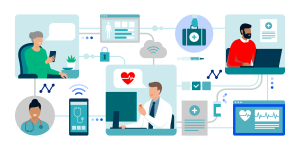Clinical review, a vital component of the healthcare landscape, serves as a key mechanism for assessing and enhancing the quality of care provided to patients. In this comprehensive guide, we will explore the intricacies of mastering the clinical review process to ensure top-notch quality and patient satisfaction.
Understanding Clinical Review: A Primer
Clinical review (CR), as the primary keyphrase suggests, is at the core of healthcare quality assessment. It involves the systematic evaluation of clinical practices, medical records, and patient care procedures to ensure they meet established standards. Clinical review is multifaceted, covering a wide range of elements, from patient outcomes to adherence to clinical guidelines and protocols.
Why Review Matters
Clinical review is not just a bureaucratic process; it plays a vital role in the overall healthcare ecosystem. Here's why CR is of utmost importance:
- Enhancing Patient Safety: CR identifies gaps and areas for improvement in patient care, ultimately contributing to better safety and outcomes.
- Quality Improvement: By regularly assessing clinical practices, healthcare providers can implement necessary changes and continuously enhance the quality of care they offer.
- Compliance with Standards: CR ensures that healthcare organizations adhere to established standards and guidelines, reducing the risk of legal and regulatory issues.
- Optimizing Resources: It helps in the efficient allocation of resources, reducing unnecessary costs and improving overall operational efficiency.
The CR Process: Mastering the Key Steps
To truly excel in the clinical review process, healthcare organizations need to master the key steps involved. Here's a detailed breakdown of how to navigate the process effectively:
1. Data Collection and Documentation
The foundation of any CR process is accurate and comprehensive data collection. This includes patient records, medical histories, and clinical guidelines. To master this step, it's essential to ensure that data is consistently collected, organized, and documented.
2. Assessment of Care Processes
Once the data is collected, healthcare professionals, including physicians, nurses, and quality improvement teams, and assess the care processes. This step involves reviewing clinical practices to identify areas where adherence to guidelines can be improved.
3. Identifying Quality Indicators
Quality indicators are benchmarks that help evaluate the effectiveness of clinical practices. Identifying the right quality indicators is crucial in the CR process. They can include factors such as patient outcomes, infection rates, and patient satisfaction.
4. Performance Measurement
After identifying quality indicators, performance is measured against them. This step involves analyzing data and comparing it to established benchmarks. Mastering this step requires advanced data analysis and statistical skills.
5. Feedback and Improvement
One of the most critical aspects of clinical review is the feedback loop. Once deficiencies are identified, healthcare providers need to develop strategies for improvement and implement changes in clinical practices accordingly.
What Is CR?
As the secondary phrase, "What is clinical review," suggests, understanding the basics of clinical review is fundamental to mastering the process. CR is a comprehensive assessment of clinical practices and patient care to ensure that established quality standards are met. It encompasses data collection, assessment of care processes, identification of quality indicators, performance measurement, and continuous feedback and improvement.
Best Practices in CR
To achieve excellence in the CR process, it's essential to follow best practices that ensure the highest quality of care. Here are some key recommendations:
- Standardization: Standardize clinical review processes and documentation to ensure consistency and accuracy.
- Collaboration: Encourage collaboration among healthcare professionals, as diverse perspectives can lead to a more thorough clinical reviewS.
- Regular Training: Provide ongoing training and education to healthcare staff involved in the CR process to keep them up to date with best practices and guidelines.
- Advanced Technology: Leverage advanced healthcare information systems and data analytics tools to streamline data collection and analysis.
- Patient-Centered Care: Always keep the patient at the center of the CR process, ensuring that care is aligned with their needs and preferences.
Unlocking Excellence: Your Path to Mastery in Clinical Review
Mastering the clinical review process is the key to achieving top-tier healthcare quality. Clinical review, as a fundamental aspect of healthcare assessment, requires meticulous attention to detail, data accuracy, and a commitment to continuous improvement. By following best practices and understanding the critical steps involved, healthcare organizations can ensure that their clinical review processes contribute to enhanced patient safety, improved outcomes, and adherence to the highest standards of care. Ultimately, mastering clinical review is a testament to a healthcare organization's dedication to delivering quality care to its patients.
Partner With BHM To Streamline Your Corporate Ingretiyy Agreement Process
| Editor's Note: BHM Healthcare Solutions offers case review and medical director expertise, business intelligence, software, CIA consulting services and accreditation support focused on improving patient care. Contact BHM for a brief discussion on how BHM achieves success. CLICK HERE |
